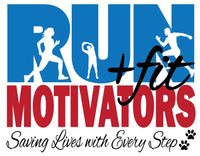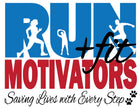Fitness for ADHD and Neurodivergent Minds: How to Build a Routine That Actually Works
If you have ADHD or struggle with executive dysfunction, building a consistent fitness routine can feel nearly impossible. The typical “just be disciplined” advice doesn’t cut it when your brain craves novelty, forgets plans, and rebels against structure.
But here’s the good news—you don’t have to follow traditional fitness rules. There are ways to move your body that work with your brain, not against it. Let’s break down how to build a fitness habit that actually sticks.
1. Ditch the "All or Nothing" Mentality
Many neurodivergent people struggle with perfectionism—either doing something perfectly or not at all. This mindset can kill fitness routines before they start.
✅ Shift Your Perspective: Instead of thinking, “I have to work out for 60 minutes or it doesn’t count,” try:
➡ “Any movement is good movement.”
Even 5 minutes of stretching, dancing, or walking is a win!
2. Make Exercise a Dopamine-Boosting Activity
ADHD brains crave dopamine, and boring, repetitive workouts won’t cut it. The secret? Make movement fun, engaging, and rewarding.
🔹 Try new things: Dance workouts, obstacle courses, rock climbing, bouncing on a trampoline—switch it up often!
🔹 Gamify your workout: A VR gaming system like the Meta Quest 3S gives us the excitment of video game play while moving our bodies. It's a full-body workout that's a ton of fun!
🔹 Strive for rewards: Run Motivators offers real medals, finisher shirts, and certificates for completing virtual races and challenges. Earn rewards while staying active! 🏅 Join a race or challenge today!
🔹 Pair it with something fun: Listen to an audiobook, watch a show, or call a friend while you move.
When fitness feels exciting, consistency becomes so much easier.
3. Use “Body Doubling” for Motivation
Body doubling—having another person present while you complete a task—helps ADHD brains stay engaged.
Ways to use body doubling for fitness:
✅ Join a virtual challenge (like Run Motivators!)—track progress with others and celebrate together.
✅ Workout with a friend (even over FaceTime!).
✅ Attend live online classes where you feel "watched."
Knowing someone else is doing it too can make all the difference.
4. Reduce “Task Initiation” Barriers
ADHD makes starting tasks the hardest part. Lower the effort it takes to get moving:
✔ Sleep in your workout clothes so you don’t have to change.
✔ Keep workout equipment in sight (yoga mat on the floor, weights by the couch).
✔ Stack it with an existing habit (stretch while making coffee, do squats while brushing your teeth).
The less effort it takes to begin, the less resistance your brain will put up.
💡 Pro Tip: A Run Motivators challenge can serve as a daily accountability reminder—log your steps or miles toward a medal-worthy goal!
5. Ditch Strict Schedules—Use Flexible Time Blocks Instead
Rigid schedules often backfire for ADHD brains. If planning a workout at exactly 7 AM stresses you out, try this instead:
🕒 Use flexible “movement windows” instead of fixed times.
🚶 Example: “Sometime before lunch, I’ll move my body for 10 minutes.”
🎲 Or make it random: Roll a dice to choose a workout from a list!
Having options keeps boredom at bay while still keeping you accountable.
6. Set Tiny, ADHD-Friendly Goals
Big fitness goals can feel overwhelming and lead to avoidance. Instead, break them into tiny, dopamine-friendly wins.
Instead of: “I want to run 3 miles.”
Try: “I’ll put on my shoes and walk for 5 minutes.”
Instead of: “I need to work out 5 days a week.”
Try: “I’ll move my body for 5 minutes today. If I feel like doing more, I will.”
7. Use External Accountability to Stay on Track
If your brain ignores internal motivation, try external accountability methods:
📅 Set reminders & alarms (Bonus: Name them something fun like "Time to be a fitness warrior!")
📖 Track workouts in a way that’s fun (color-coded planner, habit app, or a sticker chart—yes, even for adults! Many of Run Motivators challenges give you the options to download a printable color-in tracke. They're also a fun way to stay accountable.)
👫 Tell a friend your goal and ask them to check in.
💡 Run Motivators' Facebook community is a great place to find like-minded people who encourage and support your fitness journey. Join the community here!
8. Forgive Yourself When You Miss Days—Then Keep Going
Neurodivergent people often struggle with “I missed a workout, so I failed” thinking. Missed days are normal. What matters is starting again.
💡 Mindset Shift: Instead of: “I ruined my streak,” try:
✅ “Missing a day is part of the process.”
✅ “I can start again anytime.”
✅ “A slow fitness journey is still progress.”
There’s no falling behind—only moving forward at your own pace.
Final Thoughts: Move in a Way That Works for YOUR Brain
Forget cookie-cutter fitness advice. If you have ADHD or struggle with routines, your fitness journey will look different—and that’s okay.
✔ Make movement fun and dopamine-friendly.
✔ Use body doubling or accountability.
✔ Reduce barriers to getting started.
✔ Set flexible, low-pressure goals.
✔ Be kind to yourself when motivation fades.
Your brain works differently, so your fitness routine should too. The key isn’t forcing structure—it’s finding what actually works for you.
💬 Do you struggle with consistency in fitness? What’s helped you stick with it? Share your thoughts in the comments!
Next Steps: Join a Challenge That Works for YOU!
Whether you move fast or slow, walk or run, Run Motivators’ virtual races and challenges help keep you motivated. Earn real medals, charms, shirts, and more while moving at your own pace.
✨ Ready to get started? Find your next challenge here!
Disclaimer:
This blog may contain affiliate links, which means I may earn a small commission if you purchase through these links—at no extra cost to you. I only recommend products and services that I personally use, trust, or believe will benefit my readers. Your support helps keep this blog running!




Leave a comment